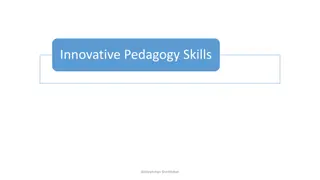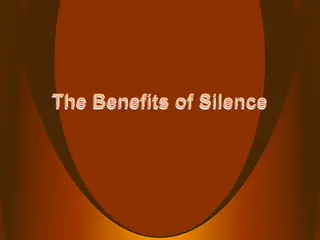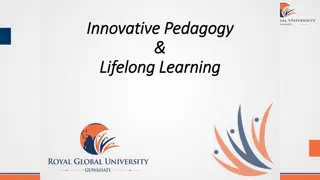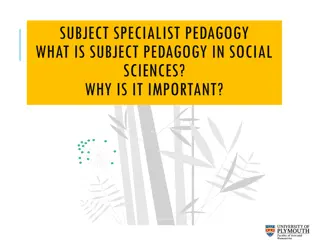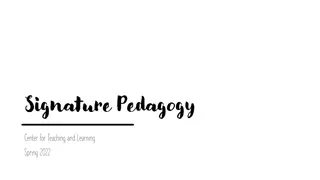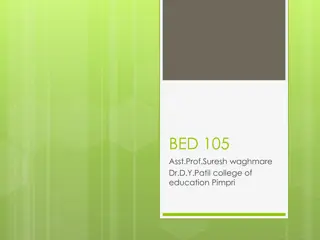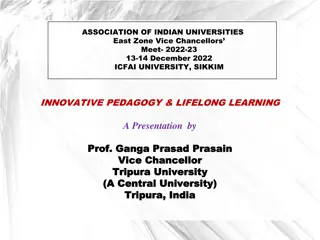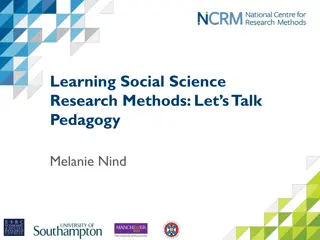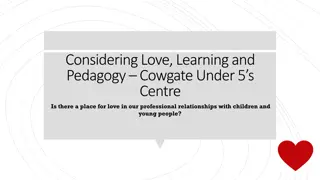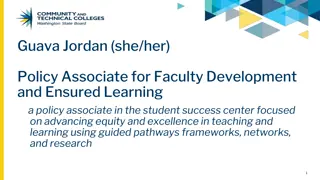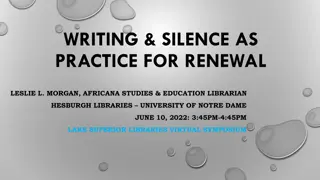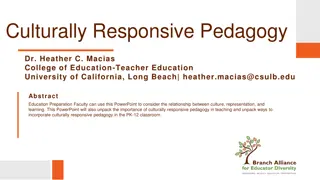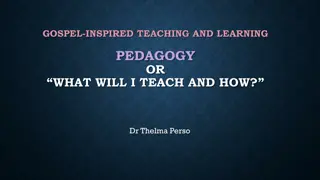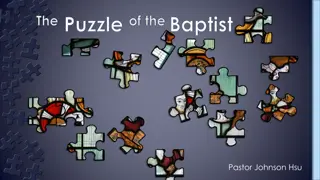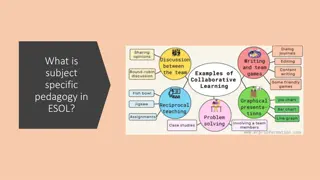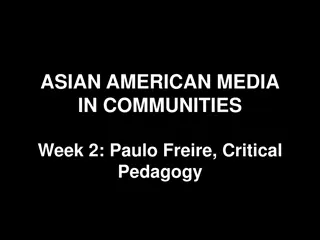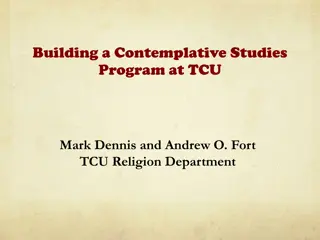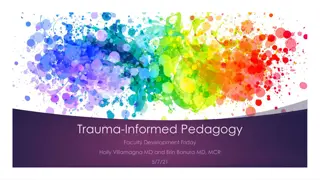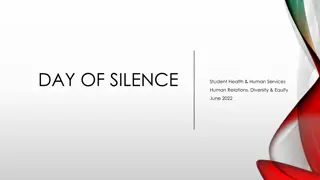Exploring Contemplative Pedagogy: The Power of Silence in Teaching and Learning
Delve into the transformative realm of contemplative pedagogy, led by Dr. Caroline Barratt, to understand the profound impact of utilizing silence as a tool for enhanced learning experiences. Through workshops and group discussions, educators discover ways to incorporate silence, fostering deeper connections to students' internal worlds and promoting meaningful relationships within the educational space.
Download Presentation

Please find below an Image/Link to download the presentation.
The content on the website is provided AS IS for your information and personal use only. It may not be sold, licensed, or shared on other websites without obtaining consent from the author. Download presentation by click this link. If you encounter any issues during the download, it is possible that the publisher has removed the file from their server.
E N D
Presentation Transcript
Education Insight Series Applying Contemplative Pedagogy 1 Using silence in teaching and learning Dr Caroline Barratt School of Health and Social Care
Workshop outline Introductions why this workshop? Introduction to contemplative pedagogy Noisiness of current HE learning spaces Experiencing silence during teaching Employing silence and space in your teaching and learning
Contemplative pedagogy ... first person approaches which connect students to their lived, embodied experience of their own learning. Students are encouraged to become more aware of their internal world and connect their learning to their own values and sense of meaning which in turn enables them to form richer deeper, relationships with their peers, their communities and the world around them (Barratt 2014 https://contemplativepedagogynetwork.com/what-is-contemplative-pedagogy/)
Group discussion Do you recognise this description of noisiness in higher education? In what ways? How is your teaching/support is affected by noise ? Are there other sources of noise that impinge upon the learning of students?
Silence in educationSilence Tomasz Baranowski/Flickr
Group discussion What does silence mean to you? Explore similarities and differences in your group How do you experience silence with students when it arises?
Undervalued and overlooked? Ollin (2008) study of silence in teaching (n = 25 all in post 16 education) Relaxation/slowing down time Time for independent thought without intrusion of others (peers and teachers) Different interpretations of silence at different times - indication of comfort and security? Absorption? Disengagement? Deliberately abstaining from intervention - skill not sufficiently understood Creative space Learn about themselves Depends on the audience
What about us? As educators silence buys us space too. We also learn through the experience of discomfort it can bring. We might learn something new if we are quiet for long enough We can develop this capacity inside of us too - what might it mean to become less noisy teachers? Embodying silence? Broadening our spectrum of presence and interaction in the classroom
Integrating silence Performing silence (Trahan 2013) start or end with silence invite student summaries/reminders (teacher silence) say I don t know respond with further questions ask students to write down a complex question rather than just giving an answer being strategically na ve periods of reflection after thought provoking moments
Integrating silence From my experience: free writing reflecting on an image/poem creating deliberate, boundaried periods of silence period of mindfuless practice developing my own inner silence and capacity to be with that Not only about sound Amount of content Spaciousness Visual input
Pedagogical decisions How are you intending to use silence? For what purpose? Who are your students? Where are you teaching them? What are the risks and benefits? How will you take care of them?
What will you do? 5 minute silent reflection to come up with ONE small thing you are going to do in response to this session. take a moment of silence for yourself before teaching use a silent mode of reflection in class? Free writing? ask students to silently ponder a question before asking them to vocalise their answer experiment with longer silences after you pose a question or ask them to contribute identify a particular teaching/support occasion to implement it 10 minute group discussion to share and support
Creative potential of silence a space of contemplative silence where students are connected to the wholeness of their being and able to quiet their judging mind both self- judging and judging others that has kept them from seeing clearly Frustrating I have lost the source of this quote but it was so important I have still included it. I hope to update this once I find it again!
In teaching, we should work to break through the loop of drive that constitutes students as the subjects of accumulating and accelerating pleasures. In this way, the authentic being together of students and teachers, which includes passages of both silence and discomfort (not just talk), should pull students away from the habitual selves that insulate and isolate them. (De Lissovoy 2018: 198)
Silence in education Tomasz Baranowski/Flickr
References Barratt, C. (2014) What is contemplative pedagogy? https://contemplativepedagogynetwork.com/what-is-contemplative- pedagogy/ Accessed 22 March 2019 Corrigan, P. 2011. Silence and progressive teaching. ENCOUNTER: Education for Meaning and Social Justice 24(1): 8-11. De Lissovoy, N. 2018. Pedagogy of the anxious: rethinking critical pedagogy in the context of neoliberal autonomy and responsibilization, Journal of Education Policy 33 (2): 187-205. Ollin, R. 2008. Silent pedagogy and rethinking classroom practice: structuring teaching through silence rather than talk, Cambridge Journal of Education. 38 (2): 265-280 Trahn, H. 2013. The Silent Teacher: A Performative, Meditative Model of pedagogy Liminalities: A Journal of Performance Studies 9 (3)



